Entering a pool of candidates — Personal details of applicant
Names tab
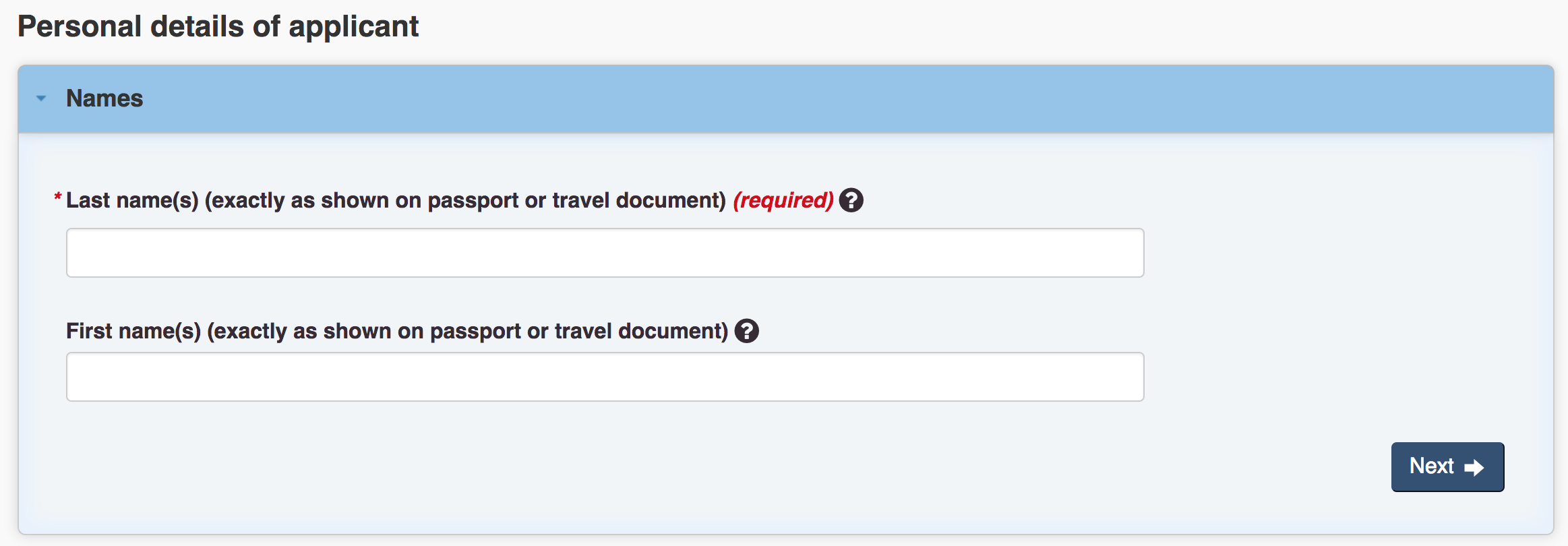
Enter your names as they appear on your passport, replacing commas with spaces. Please note that only Roman characters and French accents (i.e. é, è, ç, ô, etc.) are accepted—you’ll see an error message if you enter an unsupported character (e.g. ñ, ē, ø, å, etc.). Enter your name without special characters, i.e. “Julia” for “Júlia” or “Fabio” for “Fábio.”
The form is not case sensitive. If your last name is printed as “SMITH” on your passport, you can enter it as “Smith.”
If your name was spelled incorrectly on your passport, you must use the same incorrect spelling on your IEC work permit application. Or you could have the mistake corrected before applying!
Personal description tab
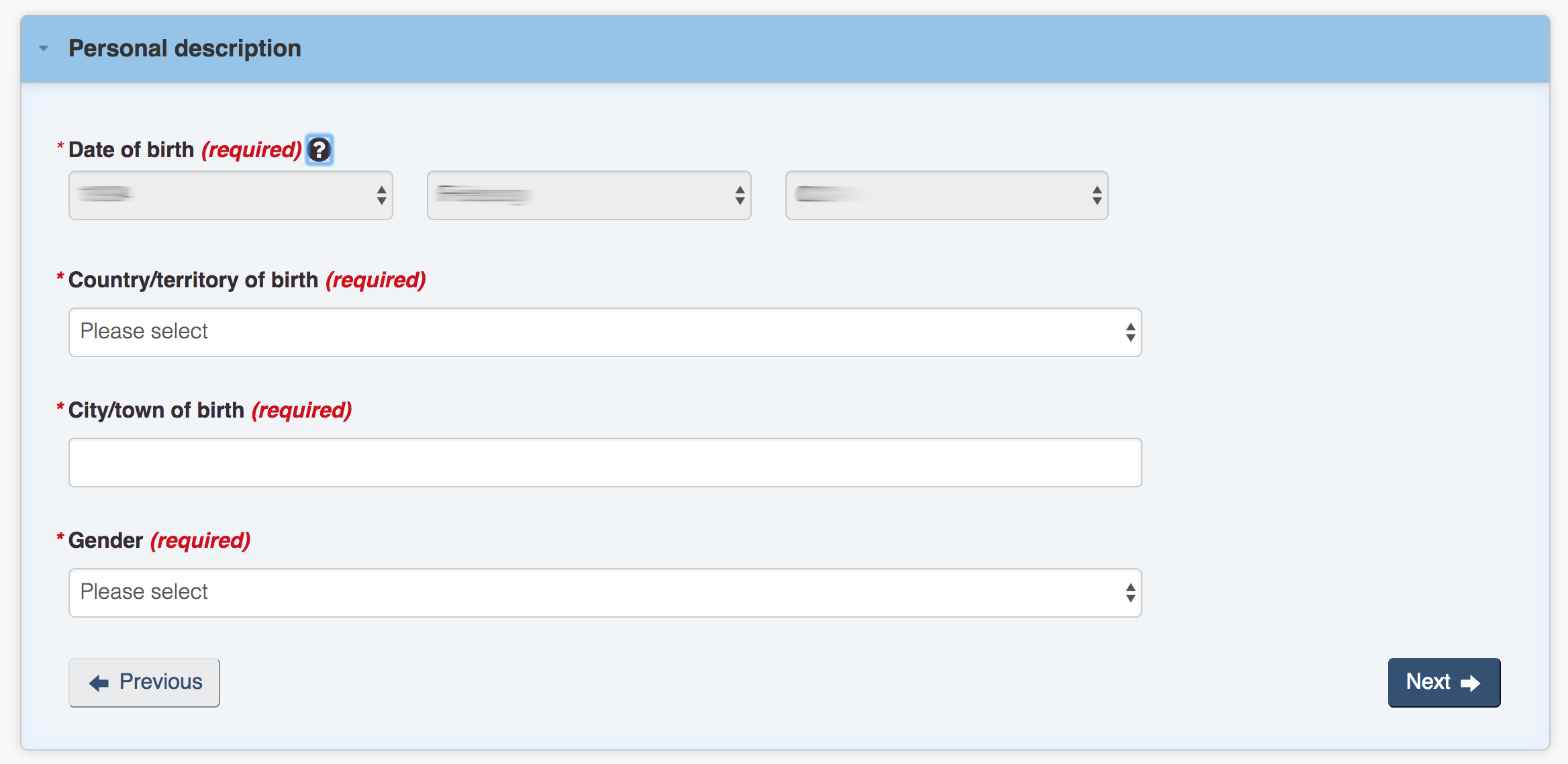
Date of birth (grey field, can’t be changed): Make sure this information is correct. If not, delete your application and create a new profile (no need to create a new Immigration, Refugees and Citizenship Canada account).
Country/territory of birth and city of birth: Make sure this information is correct. You won’t be able to update it after you receive an Invitation to Apply.
Gender: Select “male,” “female” or “another gender” from the drop-down menu and click “Next.”
Make sure the info is correct. You won’t be able to change it after submitting your application.
Marital status tab

Choose an option from the drop-down menu:
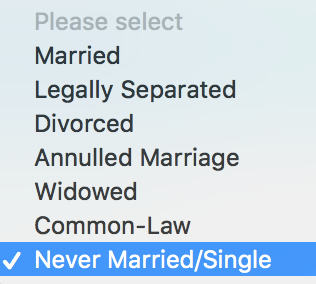
Notes:
- Canada recognizes same-sex marriage as long as it’s legally registered in your country of residence/citizenship.
- In Canada, common-law partners are two people of the same or opposite gender who have been living together for at least 12 consecutive months in a marriage-like relationship.
Your marital status is irrelevant to the IEC work permit application. The rule for the three IEC work permit categories (Working Holiday, Young Professionals and International Co-op—Internship) is simple—each applicant must submit a profile in an IEC pool and applications are assessed separately. There is no guarantee that you will both be invited to apply for a work permit even if you’re married or in a common-law relationship. If you do get an Invitation to Apply, your spouse or common-law partner will NOT automatically get a work permit under IEC to come with you.
That said, your spouse or common-law partner may be eligible for a student visa or an open work permit. They could also come to Canada as a visitor. And, in a few cases, their status as spouse or common-law partner of an IEC permit holder might help. For more info, read International Experience Canada (IEC) — Spouse or Common-Law Partner Open Work Permit 101.
ID documents tab
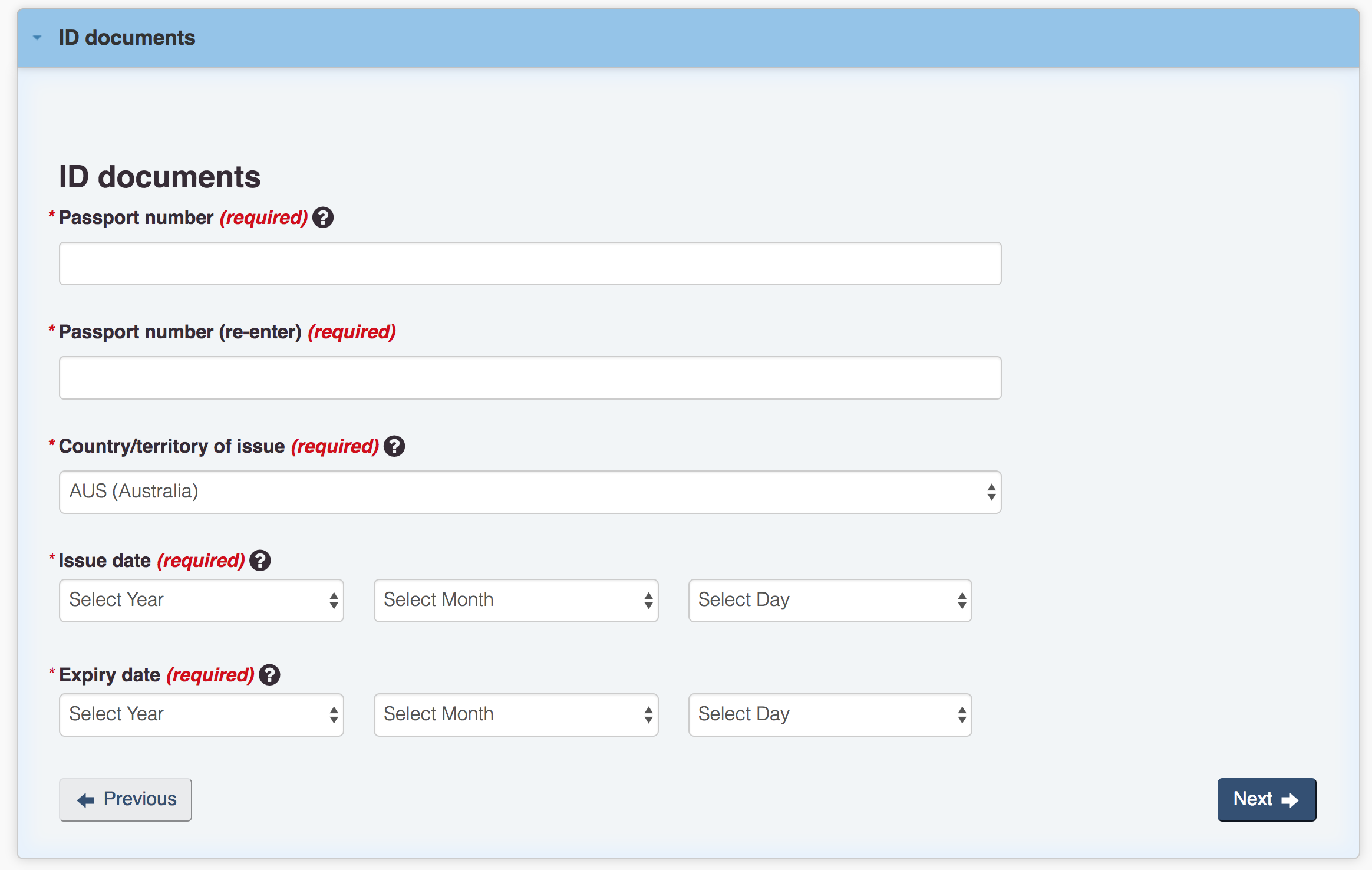
Enter your passport number twice—you will usually find it on the top right of page 2 or 3 of your passport, above your picture. Make sure you don’t misread the symbols because the number “0” can look like an uppercase “O” and the number “1” can look like an uppercase “I.” Each country has a different number format, e.g. a British passport has nine numerical digits but a New Zealand passport has two letters followed by six numerical digits, etc. Check the format for your country matches the passport number you have entered.
Note that applicants from Taiwan who have a passport issued by the Ministry of Foreign Affairs must enter their “personal identification number” instead of a passport number.
Country/territory of issue: Most of the time, the country of issue is your country of citizenship. Even if you renewed your passport abroad, the country of issue is still your country of citizenship (there are a few exceptions, which should be noted in your passport if applicable).
Issue date/Expiry date: Enter them as shown on your document.
Immigration history and citizenships tab
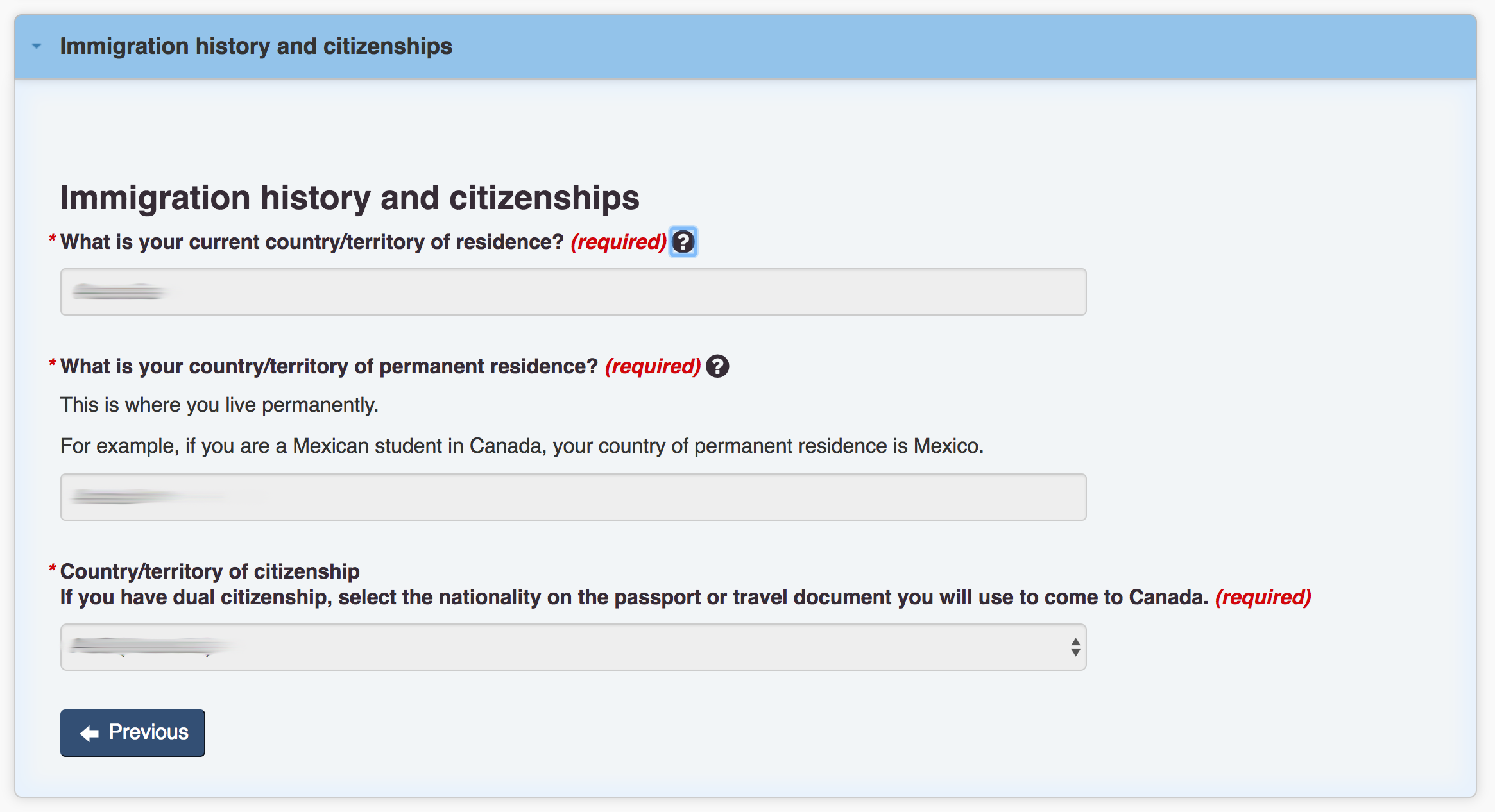
This information can’t be changed; the fields are prefilled with the details you provided earlier. If you see a mistake, delete your profile and start a new one (using the same Immigration, Refugees and Citizenship Canada account).
That’s it for this form! Click “Save and exit” or “Validate.”
If you need to take a break while filling out the form, click “Save” to make sure you don’t lose what you’ve entered so far. Inactive sessions do expire and you may have to log in again. Clicking the “Save and exit” button brings you back to the eService homepage. Clicking “Validate” lets you stay on the same page.
Now, look at your eService homepage. If you’re done, the Personal details form should say “Complete” with a green checkmark.
















 Français
Français English
English




0 comments
{{like.username}}
Loading...
Load more